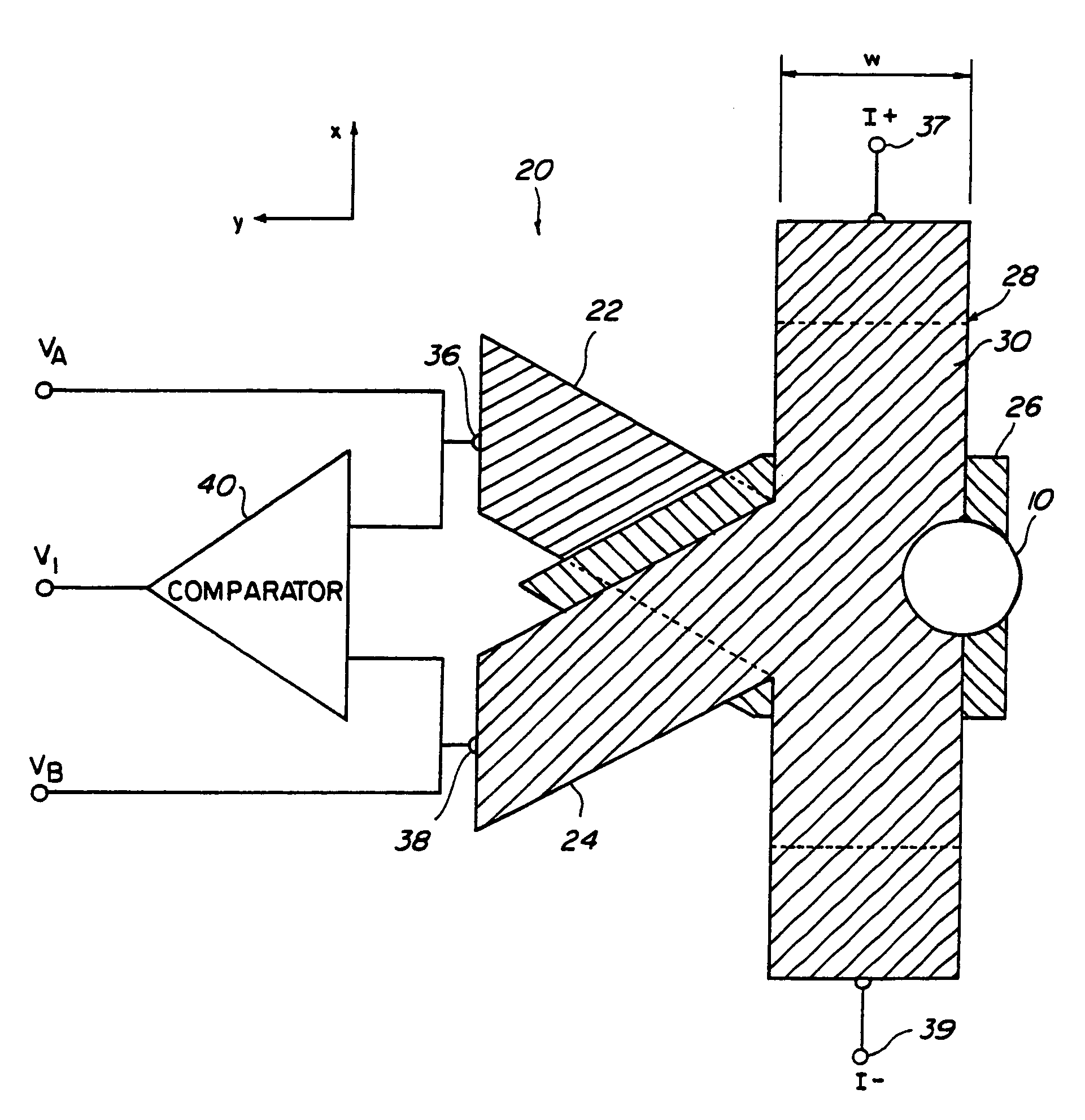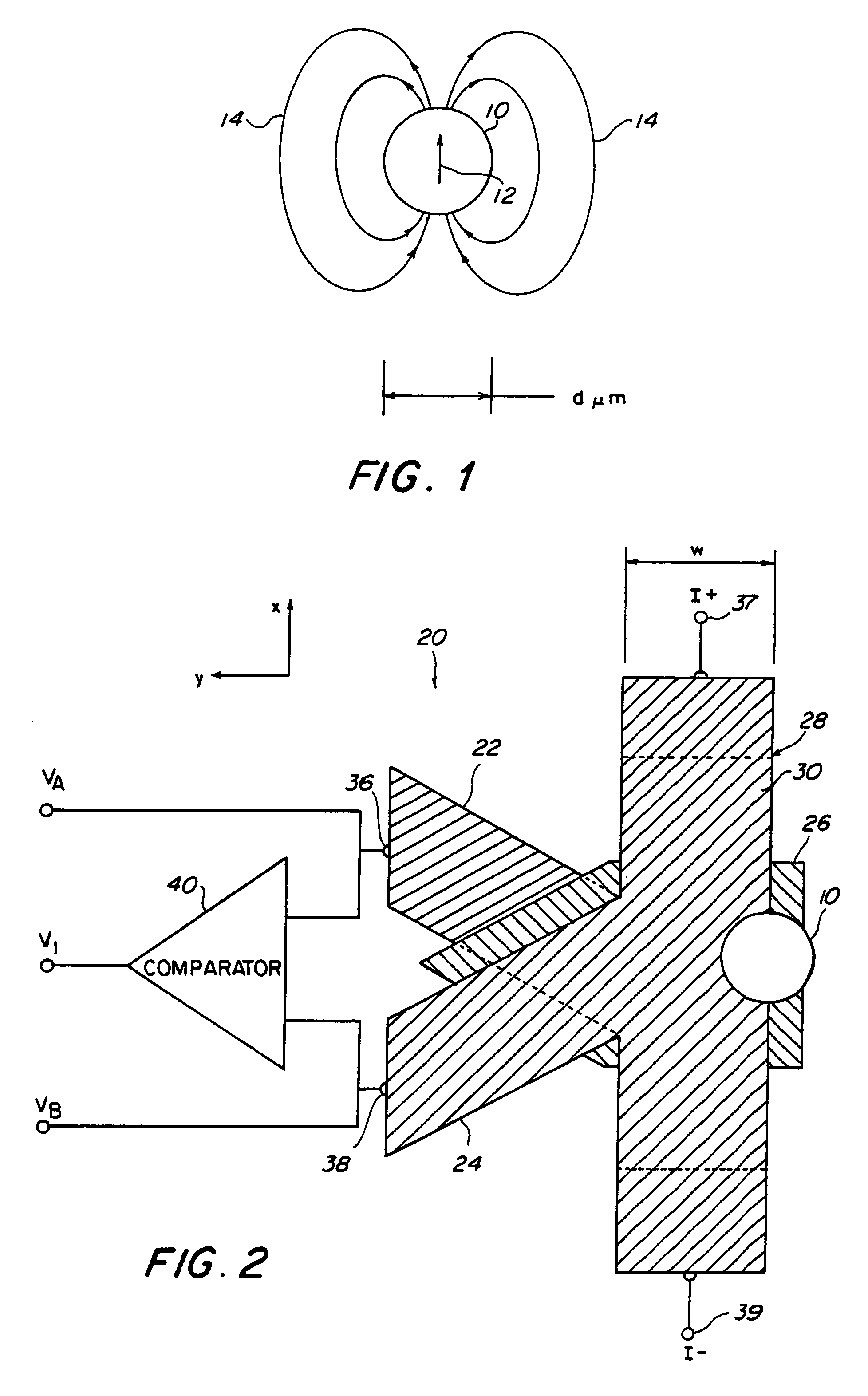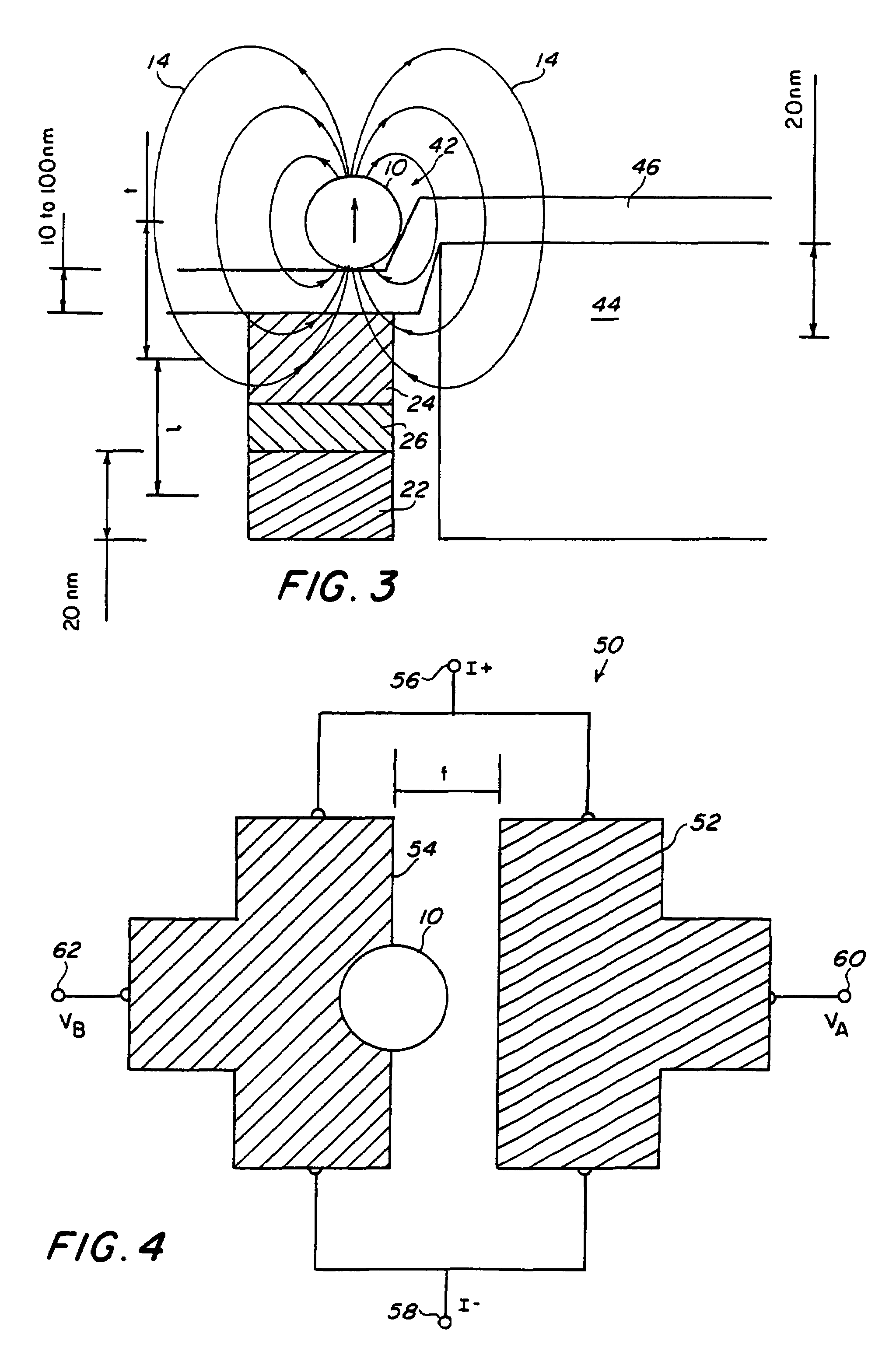Integrated gradiometer
a magnetic field gradient and integrated sensor technology, applied in the direction of magnetic gradient measurement, magnetic field measurement using galvano-magnetic devices, instruments, etc., can solve the problems of compromising the sensitivity of a gmr element, affecting the accuracy of gmr element detection, etc., to achieve the effect of enabling susceptibility techniques
- Summary
- Abstract
- Description
- Claims
- Application Information
AI Technical Summary
Benefits of technology
Problems solved by technology
Method used
Image
Examples
Embodiment Construction
[0031]As used herein, the term “local magnetic field source” refers to a microscopic magnetized object that generates a local magnetic field with an associated field gradient. An example is a microscopic magnetic particle, with diameter of order 10 nm up to 5 microns. Where reference is made herein to first and second sensors that are spaced apart at a distance effective for measuring a magnetic field gradient having a spatial scale of d microns, the meaning is as follows. The locally strong magnetic fields associated with microscopic magnetic particles, or generally any microscopic magnetic structure, can be modeled as coming from a superposition of sources characterized as monopole or dipole. Typically, components from dipolar sources dominate the characteristics of the local field. The spatial scale d that defines the dipole is a characteristic length scale for the spatial variation of the local magnetic field. It has been noted that the lateral dimensions of the first and second...
PUM
 Login to view more
Login to view more Abstract
Description
Claims
Application Information
 Login to view more
Login to view more - R&D Engineer
- R&D Manager
- IP Professional
- Industry Leading Data Capabilities
- Powerful AI technology
- Patent DNA Extraction
Browse by: Latest US Patents, China's latest patents, Technical Efficacy Thesaurus, Application Domain, Technology Topic.
© 2024 PatSnap. All rights reserved.Legal|Privacy policy|Modern Slavery Act Transparency Statement|Sitemap



